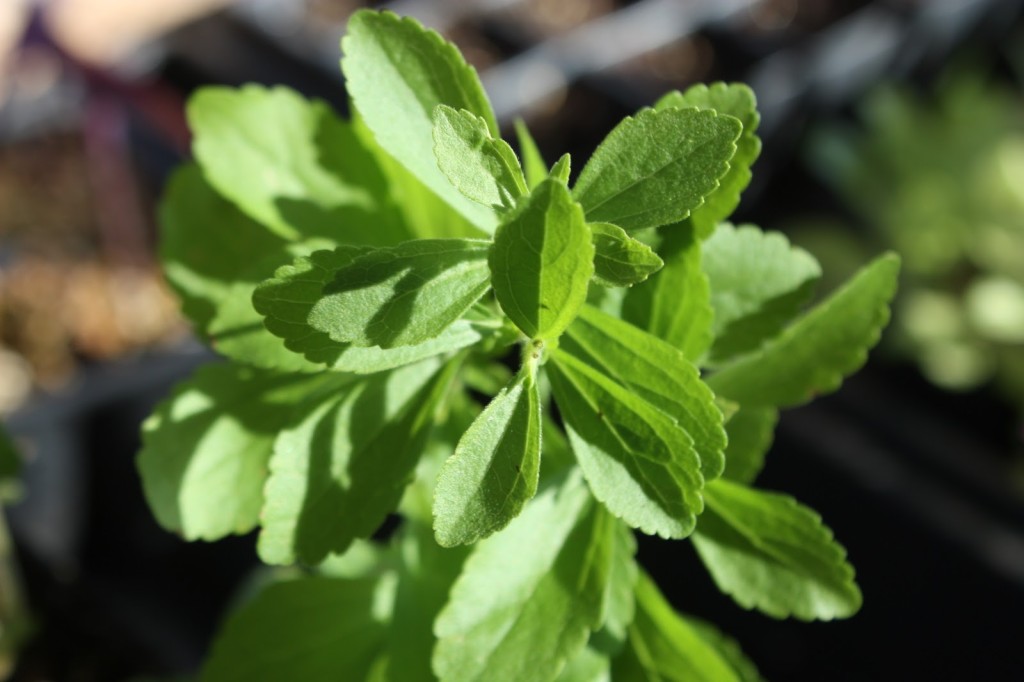from motherearthnews.com
Growing stevia is easy in well-drained beds or large containers, and the leaves can be dried for winter use like any other herb. Stevia grows best in warm conditions similar to those preferred by basil. Plants grown in warm climates will grow to 24 inches tall and wide. Where summers are cool, expect stevia plants to grow up to 16 inches. Grow three to five plants for a year’s supply of dried stevia leaves.
Stevia can be started from seed indoors in late winter, but it’s best to grow it from rooted cuttings. Germination of stevia seeds tends to be spotty, so keep seed-sown plants under bright lights until the weather warms in spring. Look for stevia plants in the herbs section at garden centers, or locate mail-order suppliers using our Seed and Plant Finder.
Choose a well-drained site, and set out the plants 2 feet apart after your last frost. Be sure to choose an accessible spot, because you will need to gather stems often. Where summers are extremely hot, stevia benefits from slight afternoon shade. Elsewhere, grow stevia in full sun.
Left unpruned, stevia will grow into a lanky, upright plant that produces tiny white flowers in late summer. To maximize leaf production, you must trim back the plants several times to induce branching, first when plants are about 8 inches tall, and again in early summer. You can use the leaves from the pinched-back stem tips, or root them in moist potting soil to increase your supply of stevia plants.
How to Harvest Stevia
In most areas, you can harvest stevia in midsummer by cutting back the plants by half their size, and again in early fall when new growth slows to a standstill. Stevia can be dried in bunches like other herbs, but you will get better quality by drying it in a dehydrator or a 150-degree- Fahrenheit oven until crisp. Store dried stevia leaves in an airtight container in a cool, dark place. Wait until you’re ready to use stevia leaves to crush them.
Overwintering Stevia
If you live in Zone 8 or warmer, stevia is often winter-hardy and grows as a short-lived perennial with a protective winter mulch. In colder climates, prepare two healthy parent plants for overwintering indoors. Choose 1-year-old plants grown from seeds or cuttings. Cut them back to about 6 inches, and prune roots as necessary to settle them into 6-inch containers with a light-textured potting mix. Move your stevia plants to a warm, sunny location indoors, or to a heated greenhouse. In spring, when new growth appears, cut most of the new stems and root them in moist seed-starting mix.
In the Kitchen
You can use the leaves of this healthy sugar substitute fresh or dried, but many people find the flavor improves if the sweet compounds have first been extracted in water or alcohol. With stevia, slightly under-sweetening drinks or fruit desserts tends to taste better than using too much. Too much stevia may impart a bitter or medicinal flavor. (For delectable dessert recipes that use stevia, see Naturally Sweet Stevia Recipes.)
Learn how to use stevia leaves as a versatile, low-calorie sugar substitute with the methods below. Also, use this helpful Stevia-to-Sugar Equivalent Chart.
Stevia Tea. Fill a metal tea ball with 1 rounded tablespoon of dried, lightly crushed stevia leaves. Place in a clean pint canning jar, and cover with almost-boiling water. Steep 10 minutes before removing the stevia. Screw on the lid and keep in the refrigerator for up to 5 days. Yield: 2 cups (16 ounces), sweetness equivalent to about 2 cups sugar.
Stevia Extract. Bring 1 cup water to almost-boiling, add one-half cup lightly crushed stevia leaves. Remove from heat, cover with lid, and steep 40 minutes. Strain through a coffee filter, and pour into a dark-colored container. Store in the refrigerator 1 to 2 weeks. Yield: 3/4 cup (6 ounces), equivalent to 3 cups sugar.
Stevia Tincture. Place one-half cup dried, lightly crushed stevia leaves in a clean glass jar. Add 3/4 cup 100-proof vodka or rum. Screw on the lid and shake. Place in a cool, dark place for two days, shaking the jar twice a day. Strain through cheesecloth or a jelly bag, and place the liquid in a small saucepan. Heat on low until steam rises, and maintain that temperature for 20 to 30 minutes, (do not boil). This creates a more concentrated tincture while removing most of the alcohol’s taste and smell. Pour the cooled tincture into a dark-colored container. Store in the refrigerator up to 3 months. Yield: About 1/4 cup (2 ounces), equivalent to 6 cups sugar.



No comments yet, be the first to leave one!
You must be logged in to post a comment.